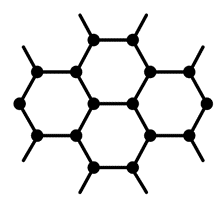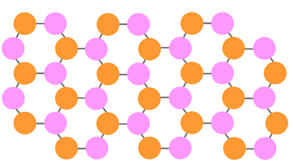20 Years of Graphene – Celebrate the Discovery of this Wonder Material
2024 marks 20 years since Geim and Novosleov developed a method for isolating graphene from graphite. Graphene is an incredible material that, in the relatively short time since its discovery, has revolutionised multiple industries.

Figure 1: Graphene is a single layer of carbon atoms arranged in a hexagonal network
Throughout 2024 we will be celebrating graphene and diving into the ways it has been used (so far) to improve batteries, electronics and more. We’ll also be highlighting our work in the analysis and characterisation of graphene using our range of spectroscopic instruments.
Discovery of Graphene
Although the theoretical existence of a single layer of graphene had been discussed since the 1940’s, it wasn’t until the early 2000’s at the University of Manchester, Geim and Novosleov managed to isolate it in practice. They were taking part in their usual Friday evening activities – doing experiments not necessarily related to their research but that interested them and allowed them some creativity.
They used sticky tape to remove some graphite from a larger piece and realised that some of the flakes on the tape were thinner than others. After repeatedly separating the flakes they managed to obtain a layer of graphite just one atom thick. They had isolated graphene.

Figure 2. Using a simple sticky tape, Geim and Novosleov were able to isolate graphene.
Six years later, Geim and Novosleov won the Nobel Prize in Physics for their discovery. Their discovery opened a whole new world of research across a wide range of It’s an incredible example of scientific ingenuity and the potential for groundbreaking discoveries from seemingly simple methods.
As research in both academia and industry continues into the properties and applications of graphene, new and exciting uses are yet to be found. Graphene is already paving the way for other exciting 2D materials such as transitional metal dichalcogenides and MXenes – but more on those later in the year.

Figure 3. 2D Transition metal dichalcogenides (above) and MXenes have the same hexagonal structure as graphene but are made up of a transition metals carbides, nitrides or carbonitrides.
Join us as we celebrate 20 Years of Graphene. Each month we will be spotlight graphene through our application notes, video demonstrations, podcasts and more! Stay up to date by joining our mailing list or following us on social media.









